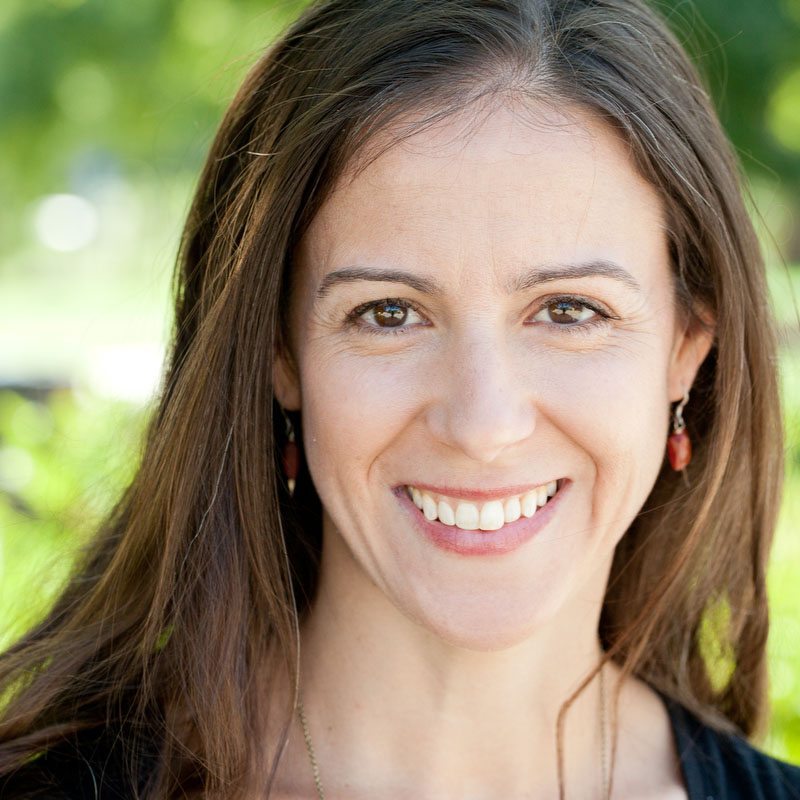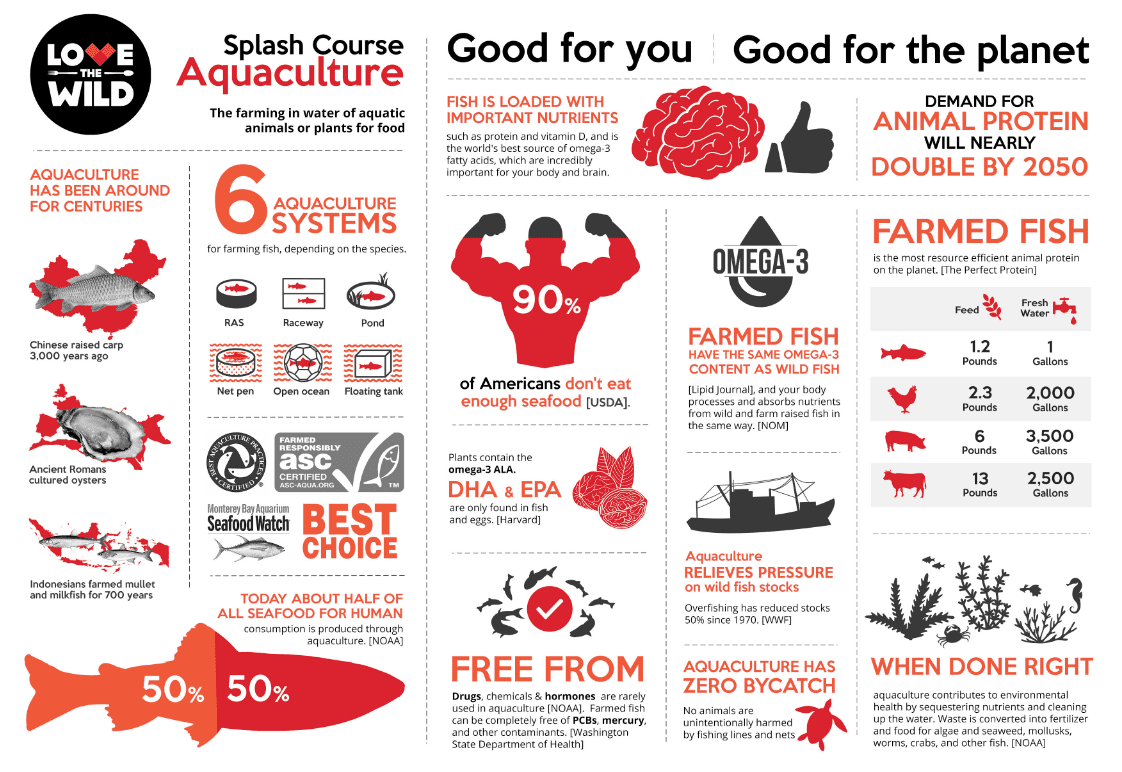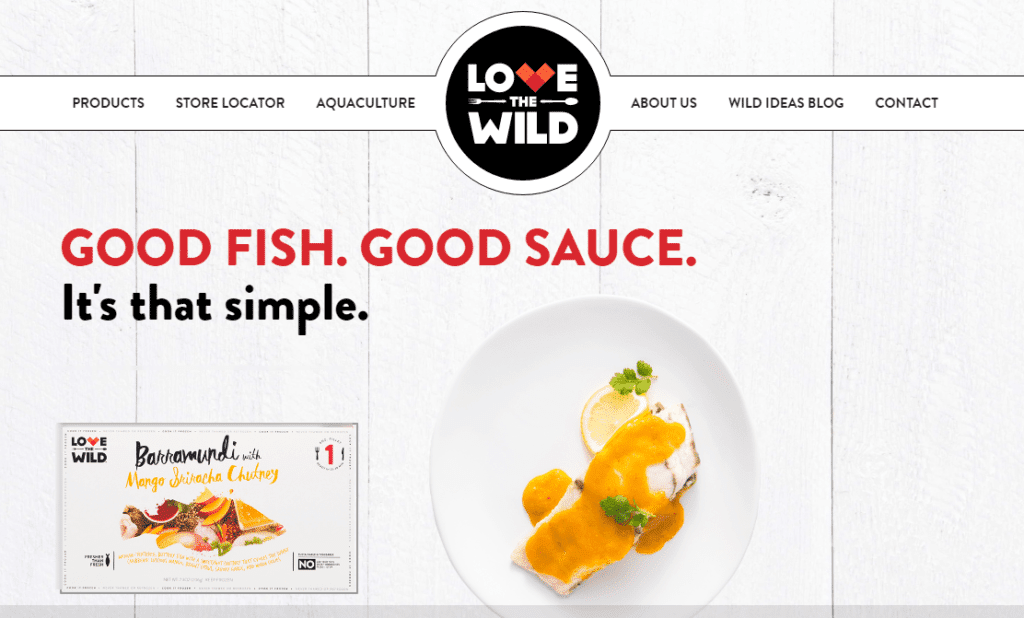Jacqueline Claudia on Creating Change

Driven by a desire to change the world by getting more people to eat fish—and the right types of fish—Jacqueline Claudia started Love The Wild in 2014.
With a focus on 100 percent sustainable farm-raised fish, Love The Wild pairs seafood with bold sauces and foolproof cooking instructions to make preparing it at home as easy as possible. The company’s simple mission and fresh approach have captured the attention of many people including Leonardo DiCaprio! Read on to learn more about Jacqueline’s story, her vision for a sustainable food system, and her kids’ favorite way to eat fish (It’s not what you think!).
Let’s start at the beginning: How did you get interested in seafood?
I’ve always a little bit of a fish nerd. As a kid, I had five aquariums and thought I was going to be Jacques Cousteau. As I learned more about aquaculture, the more I believed it was the future of a sustainable seafood industry. After working in the industry for several years I took a step back and realized: There were so many smart and passionate people working in aquaculture, and working to change the food seafood system. However, if more people don’t eat fish, it’s all kind of pointless.
I decided that my passions would be best served by creating a consumer brand that took the fear and uncertainty out of eating fish. I thought that a really simple branded product could address a lot of the problems around getting people to eat fish, which is why I started Love The Wild.
Your LinkedIn bio says “Passionately building a company that will save the world.” Tell me more!
I feel like aquaculture is our best shot at a sustainable food system. Additionally, getting people to eat more seafood regularly leads to better overall health. Near term, this is how we’re going to accomplish those two things.
Love The Wild is based on Boulder. Was that a strategic choice?
Well, I’d say it was 50/50 strategic decision. To start, we lived here. But it was also a good place to start Love The Wild. Part of my vision is to make frozen seafood as great as some of the other frozen entrees out there, which requires taking more lessons from natural food versus seafood. Being in Boulder, we’re around many people who are awesome at building natural food companies. There are also a lot of founders here for support, and legitimate experts. It’s not uncommon for one of these natural food legends to walk into our office, ask us what we’re working on, and offer to help. These are people that companies travel halfway across the country to work with.
Do you have a sort of motto/mission/purpose when it comes to your work? Your life?
I’m doing exactly what I always wanted to be doing, but that doesn’t mean it’s always easy. I keep a list of firsts on my phone and whenever something bad happens I look at the list: The first time we made payroll for 15 people. The first time we were mentioned in The New York Times. The first time that we heard from a customer about how we changed his or her life.
Love The Wild recently raised a round of funding to help it transition to 100% farmed fish. Can you tell us a little bit more about this initiative and the why behind it?
When we started our company, our vision was to have all farmed fish. But even just two years ago there wasn’t a lot of farmed fish that met our criteria, so we started with half farmed and half wild. It was always our goal to phase the wild fish out. We just thought it would take longer. When we raised our Series A, we got a really compelling offer from Aqua-Spark. We loved their commitment to our vision and decided to rip the band-aid off now, sooner than we had planned. There is so much innovation happening now.
How does Love The Wild source its farmed fish?
We have our own list of sustainability criteria that we developed internally. In addition to many industry standards and certifications there are criteria that address human rights issues that are important to us. When available, we look for third-party certifications, but part of what we want to do is support new farms, and sometimes they don’t have those certifications because it can take years or they don’t need them. We don’t want to punish those who are trying new and innovative things, so we take the time to dig in, understand what they’re are doing and how they are doing it and making sure it’s something we can feel good about getting behind.
A big part of it is trust and getting to know people like Josh. [Josh Goldman, Co-founder and CEO of Australis Barramundi]. His heart is in the right place and our visions are aligned.
You’ve spoken about some advice that Josh Goldman gave you when starting out: “To a large extent, you go where the love is.” How has this advice impacted the way you’ve gone about growing Love The Wild?
The context for that advice was in answer to my question: How should I think about the distribution chain? Josh’s advice was to find people who share our vision and passion and want to help us, versus pounding our heads against the wall trying to get through to people who don’t get it yet. I’d also rather do business with people that we like.

You’ve also said that: “To drive real change we need to be everywhere, not just on the coast or in the natural grocery channel.” What is Love The Wild’s approach to be everywhere?
We’ve been lucky so far in that we’ve been sought out by grocery chains (i.e., SaveMart in Central Valley California) where people wouldn’t think to look for a product like ours. We don’t know if our product will work in this market but there is only one way to find out, and I’m proud of us for trying. I want Love The Wild to be available in places like Walmart, which is where my parents shop. In rural America, a lot of grocery stores don’t have fresh cases and the frozen seafood options are dismal.
You very much have a “we’re all in this together approach” to getting people to eat more seafood, and more of the right types of seafood. Where does this come from?
It’s my DNA. I know I can’t change the world by myself. Change happens by lots of people working together. There is a philosophy called coopetition, which basically means that I can have a competitive product by yours on the shelf and if yours get better and mine gets better, we all rise together. That’s how we’re really going to have an impact when it comes to sustainable seafood.
And as much as I focus on and support aquaculture, I think it’s amazing what’s happening with wild fish and the move to make it more sustainable and humane. We need to stop taking the approach of me vs. you and, instead, figure out how we can all work together to make change.
Getting people to change their eating habits and be open to new things is very challenging. What has worked well for getting people to try Love The Wild?
The demo is incredibly important. Tasting is believing. I’ve done thousands of demos and if we can get someone to try it, there is a 70 percent chance they will buy it on the spot. People have been trained to not go to the frozen foods case for high-quality seafood, so to retrain them, we need to get them to taste it. It’s key.
What’s been the most rewarding part of building a mission-driven company?
There are so many. I would say No. 1 is the customer letters. We get at least five a week, which is a lot for a tiny company like ours. They are so heartfelt—and we sell frozen fish! It helps us feel like we’re making an impact.
I also think about how lucky we are and how much recognition we’re getting as a company in the industry. It shows us that the industry wants to move in this direction.
And lastly, selfishly speaking as a mom, my kids have been involved in the company from day one, whether they like it or not, and they’ve seen that a business can be a force for good. When they talk about what they want to do in their careers, it’s about the challenges and problems they want to solve.
What’s your favorite way to eat fish at home with your family?
We love poké. We try to make poké out of everything we bring home. My kids actually prefer it to cooked fish. When we’re making poké or ceviche, each kid of my four kids could easily eat 3/4 of a pound if we let them. When we cook it, it’s more like ¼ of a pound per kid.
If you could leave consumers with one thing they should know about seafood, what would it be?
I think the most important thing, which is something I had to learn as I didn’t each fish when I was growing up, is that if you try one type of seafood and don’t like it doesn’t mean that you won’t like any seafood. It’s like vegetables: asparagus and I don’t agree, but I love lots of other vegetables. With seafood, there is so much variety in terms of flavor and textures. Don’t write seafood off because of one bad experience.
Be sure to try Love The Wild‘s Barramundi With Mango Sriracha Chutney! Use our Store Locator to find a retailer near you that carries it. (Available stores will show “Featured in Love The Wild kits.”)